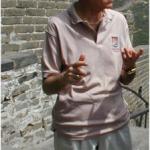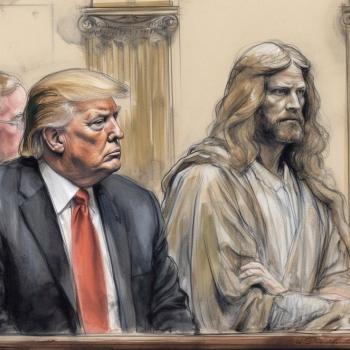ST 4117. Afterlife 7
Near-Death Experience
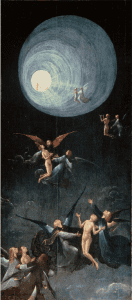
The following is a long story. But bear with me. It’s very important for our treatment of near-death experiences or NDEs.
“Would you please go visit Henrietta Bourgeois [not her real name] in the hospital, Pastor?” It was Henry, the custodian. At the time I was serving as pastor of Grace Lutheran Church in New Orleans. Henry explained that his brother had died recently. Henrietta was his surviving sister-in-law.
“But, let me warn you,” Henry continued. “Mrs. Bourgeois is very difficult to get along with. She’s a bitch, actually But, Pastor, it would mean a great deal to me if you’d visit her anyway.”
That turned out to be an understatement. When I arrived at Henrietta’s hospital bedside she demanded, “What the hell are you doing here!”
I absorbed this plus numerous additional insults like a straw target absorbs a practicing archer’s arrows. That’s the pastoral way.
Despite her rejection of me, I volunteered to show up the next morning at the time of her surgery. I met Henrietta on the gurney when being wheeled into the operating room.
“Would you like me to pray for you?” I asked.
“Well, if you must,” she responded grumpily. I held her hand and petitioned the Almighty to keep her safe. I kissed her hand, and she disappeared behind the operating room doors.
An Unconscious Wish to Die?
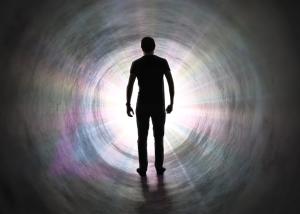
Why was Henrietta in the hospital in the first place? Infection. She had pricket her finger on a rose bush thorn. She did not wash or apply medicine. Her body filled with infection to the point of death. Still, she did not give herself any medical attention until rushed to the ER in an ambulance.
In the days following, I spoke to her doctor. If I recall correctly, Henrietta underwent cardiac arrest. She flatlined. She was brought back. Flatlining is no longer unheard of in such cases.
“She’s just not healing, Pastor,” her doctor said. “I’ve not seen anything like this before. It’s almost like her body wants to die.”
Eventually, Henrietta did heal sufficiently to be released and sent home. Every other day or so I visited her at home. She got used to me. Her grumpiness did not abate. Yet, I learned a great deal about her back story.
Her beloved husband of forty years had died a few months before. She was left to live alone with her vicious watch dog, a German Shepherd. Neighbors complained to the police about the dangerous canine. Animal control removed the dog and euthanized it. Evidently the dog had the same personality as Henrietta.
Henrietta had no friends. She was estranged from her children and grandchildren. The despair of loneliness had overtaken her. There was no sunshine in her heart. No love coming in. No love going out.
Henrietta’s Near-death Experience
“Let me tell you, Pastor, what happened on that operating table.” Henrietta was talking much more freely after a couple weeks of getting to know me.
“I felt like I had died,” she reported. “Then, I went through a long dark tunnel. Way off in the distance, I saw a pin prick of light. I crawled toward that light. With great effort, I saw that I was getting closer to the light. The light gradually grew bigger. When I was almost there, a shadow in the light appeared.”
She was nearly breathless. I listened intently and patiently.
“That shadow,” she went on, “was my husband. The closer I got the clearer he got. I could see his face. He was smiling at me. He waved to me to come on. My husband wants me to join him on the other side of death,” Henrietta exclaimed.
I continued to listen longanimously as Henrietta looked away and began to cry. I waited.
“Then,” she exclaimed. “Then something strong gripped my ankles. That strong force pulled me back and back. I could see the light with my husband’s silhouette receding further and further away. I woke up and found myself in a hospital bed.” She sobbed profusely.
Yes, I thought to myself, Henrietta wants to die but just can’t pull it off.
The Phenemonology of Near-Death Experiences
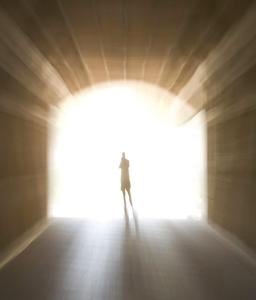
In the 1970s, M.D. and Ph.D. Raymond Moody reported on persons suffering cardiac arrest and experiencing life after life. We now use the term Near-Death Experience, perhaps to accomodate critics. NDE experiencers told Moody that “their experiences convinced them personally that there is an after life so they no longer fear death?”(Moody, 14). What is happening?
A Near-Death Experience or NDE, according to the author of Conceptions of the Afterlife in Early Civilizations Gregory Shushan,…
“…typically involves sensations of consciousness temporarily leaving the body, rising upwards and seeing one’s own “corpse” below, entering darkness or a tunnel, emerging in bright light, meeting deceased friends or relatives, encountering a being of light radiating love and acceptance, a panoramic life review with a sense of moral evaluation or self-judgment, reaching a border or limit, and ultimately returning to the body. Other commonly reported features include feelings of peace, joy, unity, universal understanding, heightened senses and clarity, seeing or entering other worlds (commonly idealized mirror-images of earth) often seen as one’s true “home,” time and thought accelerating, ESP and telepathic communication with other spirits, loud noises, music, vivid colors, being instructed or deciding to return, and lasting positive effects on the subsequent life of the NDEr. While those who have such experiences usually interpret them in spiritual or religious terms, both naturalistic and metaphysical explanations of the NDE have been put forth” (Shushan, 2020, Chapter 30).
Shushan suggests we can think of NDE’s in either scientific or religious terms. Let’s try the science first. Then religion.
The Science of Near-death Experiences
Was Henrietta dead on that operating table? Was she brought from death back to life again? It doesn’t matter to me. What matters, I think, is the symbolic drama taking place within her psyche.
What happened to Henrietta is by no means unique. Many such testimonies are on record. Gordon Litchfield, writing in The Atlantic, summarizes.
“Many of these stories relate the sensation of floating up and viewing the scene around one’s unconscious body; spending time in a beautiful, otherworldly realm; meeting spiritual beings (some call them angels) and a loving presence that some call God; encountering long-lost relatives or friends; recalling scenes from one’s life; feeling a sense of connectedness to all creation as well as a sense of overwhelming, transcendent love; and finally being called, reluctantly, away from the magical realm and back into one’s own body. Many NDErs report that their experience did not feel like a dream or a hallucination but was, as they often describe it, “more real than real life.” They are profoundly changed afterward, and tend to have trouble fitting back into everyday life. Some embark on radical career shifts or leave their spouses.”
Because of the prevalence of such NDE reports, a science of near-death experiences is developing. Some scientists are tracking what happens at the moment of death. Fascinating is Perry Wilson’s tracking of neurocorrelates to stages in the dying brain. See: “Surprising Brain Activity Moments Before Death.” What is Perry’s conclusion? It is the brain, not the breath of God or the energy of the universe, that produces this experience of transcendence.
Here’s another explanatory hypothesis: near-death experiences are caused by reduced blood flow coupled with abnormal electrical behavior inside the brain. Sometimes a dying person will undergo a surge in gamma brainwaves. Such a surge precipitates higher thought processes and memory retrieval. This is particularly the case when the surge occurs on each side of the head, known as the temporoparieto-occipital (TPO) junctions. This phenomenon prompts a hyper-conscious state.[2] Now, does this mean the NDE can be exhaustively reduced to an electrical surge in the brain? So goes the reductionist attempt to explain something spiritual in physical terms.
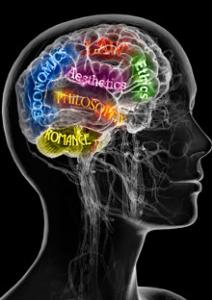
Philosopher Susan J. Blackmore denies that a near-death experience provides scientific evidence for an afterlife. “It is always possible to argue that the person did not die” she contends skeptically. This makes the NDE a “part of life and not death.”
What amazes many doctors and nurses is that patients who technically die–according to all clinical criteria they are really dead!–and brought back report observing all the activities in the operating room. Michael Schroter-Kunhardt at the Psychiatrisches Landeskrankenhaus in Weinsberg, Germany, is positively impressed by the “verifiable information concerning the physical surroundings during the experience, that cannot be explained by physiological causes.” Kunhardt concludes, “The large body of NDE data now accumulated point to genuine evidence for a non-physical reality and paranormal capacities of the human being.”
Litchfield draws some additional conclusions. A near-death experience is “perhaps the only spiritual experience that we have a chance of investigating in a truly thorough, scientific way.” He speculates further that a NDE provides “a vehicle for exploring the ancient human belief that we are more than meat…one of the great mysteries of human existence, even for the most resolute materialist.”
Is the science of near-death experiences reliable?
Is the science of near-death experiences reliable? Not if you’re neurophysiologist Christof Koch writing in Scientific American.

“Quite simply, when your brain is dead, you are dead,” is the prevailing assumption. Yet, this is inadequate, because brain-dead persons on a ventilator are capable of growing fingernails and maintaining their immune functions. “Despite technological advances, biology and medicine still lack a coherent and principled understanding of what precisely defines birth and death–the two bookends that delimit life (Koch, 2019, 36).
Harvard’s Eben Alexander, himself a NDE experiencer, excoriates physicalism and reductionism. NDE reports count as empirical evidence, contends Alexander. Accordingly, sound science should admit this evidence.
“The emerging scientific view will be one that fully embraces these extraordinary conscious experiences and provides a far more realistic model of the universe than the paltry and barren fiction provided by lame physicalism”(Alexander 123-124).
Sushan goes further. He affirms substance dualism based upon scientific evidence.
“Given the accumulated evidence, NDEs present a challenge to current reductionist models of the relationship between the mind and the brain…Ultimately, however, there has as yet been no watertight, conclusive proof either way. No reductionist theory has been able to adequately explain the NDE in all its forms and occurrences; and no empirical, replicable study has proven beyond doubt that NDEs are evidence of dualism or of life after death.” (Sushan)[2]
I want to offer thanks to our scientists for studying near-death experiences! However, to date death and afterlife remain mysteries.
The Theology of Near-Death Experiences
How might a Christian theologian go about assessing NDE reports? I appreciate how Evangelical theologian Roger Olson ponders this. He asks for scientific evidence. With honesty, he considers the possibility of both reincarnation and Near Death Experiences in his Patheos post, “Is the Mind More than the Brain (Again): NDEs and Scientists.” Note: the theologian asks for the scientist to assess the evidence.
It is crucial to our understanding NDE’s, I think, to recognize that near-death experiences are universal. That is, NDE’s are reported in different centuries and in different cultures. And, they look the same regardless. Shushan contends that this provides foundational evidence for many spiritual beliefs.
“The idea that the NDE is a universal experience type which contributes to the formations of certain religious beliefs has powerful implications for both philosophy and religious studies. It suggests that there is a category of phenomena which can logically and generically be called religious” (Shushan).
Do theologians think that near-death experience reports prove the existence of heaven as described in the Bible? Yes, said Raymond Moody in his 1975 best seller, Life after Life.[3] Yes, says Christian author Lee Strobel. No, according to Patheos guest columnist John Burke. Yes, says San Francisco psychologist Kenneth Ring.
“I found that the atheism of my younger years was insupportable and, mirabile dictu, I no longer had any doubt about God’s existence and in fact came to believe that God was intimately involved in the orchestration of NDEs. . . . God’s fingerprints are all over this phenomenon.” [Cited by Dan Peterson]
Self-declared non-religious secularist, Stephanie Savage, warns us against drinking from the “NDE Kool-Aid cup.” She dismisses near-death experience reports as nothing but a “coma-dream.” How scientific is this?
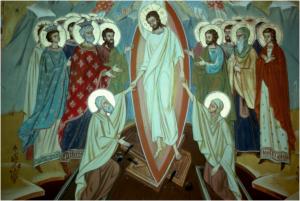
In my own theological musings, I’ve tried to treat those such as Henrietta who report a NDE with integrity. Experience counts as knowledge, I believe, even though experience must be interpreted.
The biblical promise of resurrection as we find in 1 Corinthians 15 does not look at all like what NDE experiencers report. This does not nullify what experiencers report, to be sure. Perhaps Christian theologians need a para-eschatology right along with an eschatology. Perhaps the disembodied soul experienced in a NDE belongs to the category of paraeschatology. That is to say, it belongs to the interim period betwen death and consummation. What St. Paul describes as resurrection of the body would refer to God’s eschatological and consummate promise for a new creation.
In sum, a near-death experience would belong to this creation. Resurrection of the body would belong to the new creation. Well, those are my theological speculations for the moment.
From Near-Death Experience to Communication with the Dead
Where are we going? Check out number 8 below.
- The Denial of Death
- Naturalism: When yer dead yer dead!
- Astral Body? Ka? Or Angel?
- Third Day Afterlife
- Immortal Soul
- Reincarnation
- Near Death Experience
- Communication with the Dead
- Absorption into the Mystical Infinite
- Resurrection of the Body
Conclusion
Near-death experiences draw the human imagination like a rock concert draws teenagers. Why? For two reasons, I think.
First, a NDE suggests that the supranatural accompanies the natural. That is, you and I are more than merely meat.
Second, reports of NDEs provide evidence that there is an afterlife. Death is not the end. At least not the complete end. This comes as good news to those of us who fear death.
According to Henrietta, her deceased husband was communicating with her. He was inviting her to cross over and join him on the other side.
Can we communicate with the dead? That’ll be the subject of our next post in this Patheos Afterlife series.
▓
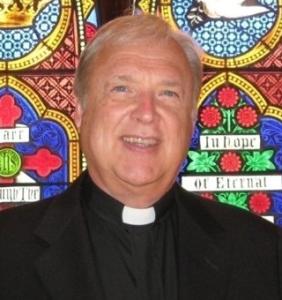
For Patheos, Ted Peters posts articles and notices in the field of Public Theology. He is a Lutheran pastor an emeritus professor at the Graduate Theological Union. He co-edits the journal, Theology and Science, with Robert John Russell on behalf of the Center for Theology and the Natural Sciences, in Berkeley, California, USA. His single volume systematic theology, God—The World’s Future, is now in the 3rd edition. He has also authored God as Trinity plus Sin: Radical Evil in Soul and Society as well as Sin Boldly: Justifying Faith for Fragile and Broken Souls. See his website: TedsTimelyTake.com.
Watch for his new 2023 book, The Voice of Public Theology, to be published by ATF Press.
▓
Notes
[1] More than a century ago, William James studied mystical experiences and attempted to understand them scientifically. James was not a reductionist. He did not reduce consciousness to brain activity. Yet, here is a first hand report of a NDE wherein the individual turns reductionism on to himself.“I thought I was near death; when, suddenly, my soul became aware of God, who was manifestly dealing with me, handling me, so to speak, in an intense personal present reality. I felt him streaming in like light upon me….I cannot describe the ecstasy I felt. Then, when I gradually awoke from the influence of the anaesthetics, the old sense of my relation to the world began to return, the new sense of my rleation to God began to fade….and then to find that I had after all had no revelation, but that I had been tricked by the abnormal excitement of my brain”(James, 1901, 1928, 391).
[2] Bruce Greyson asks for a science of NDEs which is not reductionistic.“In sum, the challenge of NDEs to materialist reductionism lies in asking how complex consciousness, including mentation, sensory perception, and memory, can occur under conditions in which current physiological models of mind deem it impossible. This conflict between a materialist model of brain–mind identity and the occurrence of NDEs under conditions of general anesthesia or cardiac arrest is profound and inescapable. Only when we expand models of mind to accommodate extraordinary experiences such as NDEs will we progress in our understanding of consciousness and its relation to brain”(Greyson, 2010).
[3] Evangelical theologian Roger Olson is a bit critical.First, “near-death experience” (NDE) is a misnomer. I don’t know who coined it for the phenomenon under consideration. Perhaps the famous researcher and author of the subject, Raymond Moody who published one of the first scientific studies of it in the 1970s. It’s a misnomer because the phenomenon, if it is one, is not actually an experience of “near-death” but of death and afterlife, then coming back to bodily life after being “out of the body” for a time…My hope for the future after bodily death, for “life after life,” is based on Jesus who promised it and on the rest of the New Testament which I do believe is divine revelation, however difficult sometimes to interpret. It is not based on NDE stories although some of them are extremely interesting.
References
Alexander, Eben, 2017. “Near-Death Experiences and the Emerging Scientific View of Consciousness.” The Science of Near-Death Experiences, ed. by John Hagan. University of Missouri Press, 123-138 [Kindle].
James, William, 1901, 1928. The Varieties of Religious Experience. New York: Longmans, Green, and Company.
Greyson, Bruce, 2010. “Implications of near-Death Experiences for a Postmaterialist Psychology.” Psychology of Religion and Spirituality 2:1; 37-45.
Koch, Christof, 2019. “Is Death Reversible.” Scientific American 321:4 (October) 34-37.
Moody, Raymond A., 2017. “Near-Death Experiences, An Essay in Medicine and Philosophy.” The Science of Near-Death Experiences, ed. by John Hagan. University of Missouri Press, 11-18 [Kindle].
Shushan, Gregory, 2020. “Near-death experiences.” Routledge Companion to Death and Dying, ed., Christopher Moreman. London: Routledge; Chapter 30.



